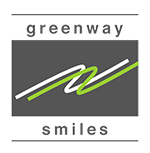 HAVE YOU EVER WONDERED how your toothbrush was made or how it’s different from toothbrushes of the past? Teeth-cleaning tools have certainly come a long way from the frayed sticks Ancient Egyptians used around 3500 BC!
HAVE YOU EVER WONDERED how your toothbrush was made or how it’s different from toothbrushes of the past? Teeth-cleaning tools have certainly come a long way from the frayed sticks Ancient Egyptians used around 3500 BC!
A Brief History Of The Toothbrush
The first toothbrushes that resemble modern ones were invented in China in the late 1500s, and they consisted of pig bristles attached to a bone or bamboo handle. Before long, the design caught on in Europe, with horse hair sometimes replacing pig. Can you imagine cleaning your teeth with animal hair? It doesn’t sound very fun to us, but there weren’t any other options back then, and it beats chewing on frayed sticks. Over the centuries, the design gradually became more like the toothbrushes we’re familiar with. Toothbrushes were first mass-produced in 1780, in England. The first toothbrush with nylon bristles was made in 1938. Sixteen years later, Philippe Guy-Wood developed the first electric toothbrush in Switzerland. Even with the long history of toothbrushes and all the advances in the design, oral hygiene didn’t become a priority in the culture until soldiers brought their strict hygiene regimens home with them from World War II. Just one more reason to be grateful for our troops!
How Your Toothbrush Is Made
Nylon bristles and plastic handles were the last major change in what toothbrushes are made of, but how are they actually made? There are a few different steps. First, the handles are molded from plastic pellets. Then a machine positions and attaches the bristles. Next, another machine trims the bristles to the right length. Finally, the finished toothbrushes are packaged and shipped. To see the manufacturing process in action, check out this video: The most important step before a toothbrush makes it to the cup beside your sink is quality control. The American Dental Association tests new toothbrush designs on comfort and efficiency. Toothbrushes that meet their standards are given the ADA Seal of Acceptance, so make sure any toothbrush you purchase has it!
You And Your Toothbrush
A toothbrush earning the ADA Seal of Acceptance isn’t the end of the story. From there, it’s up to you. Remember to brush your teeth for two full minutes twice a day, store your toothbrush upright in a dry place preferably far from the toilet after you use it, and don’t forget to replace it every few months! A frayed, worn out toothbrush can’t do the job of preventing tooth decay and gum disease as effectively as a toothbrush in good condition.
Need A Recommendation?
We know there are many toothbrushes out there to choose from, and there is no one toothbrush that’s perfect for everyone. Children need different brushes than adults, people with braces need different toothbrushes than people without, people with sensitive teeth need toothbrushes with extra soft bristles, etc. So if you’re having trouble finding the best one for you, just ask us at your next dental appointment!







